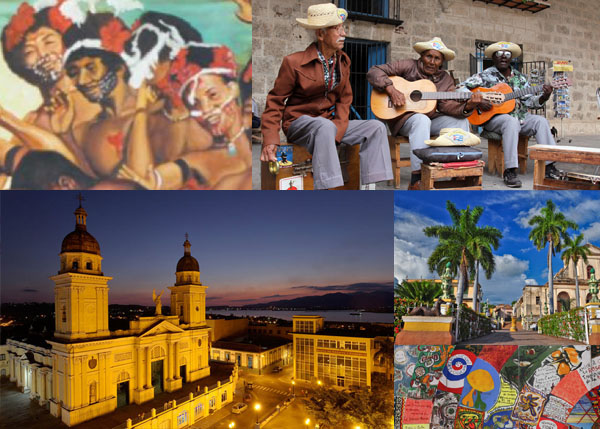9.5.2 Julio Gonzalo Elías Roig Lobo (Gonzalo Roig).

Julio Gonzalo Elías Roig Lobo, known as Gonzalo Roig, was a composer and conductor. He was born in Havana in 1890 and died in 1970. His musical studies began in the Music Section of the Association of Commercial Employees of Havana, where he was a student of Agustín Martín Mullor, in subjects such as solfeggio, theory, and piano. He later received violin lessons from Gaspar Agüero Barreras and Vicente Álvarez Torres. He later studied harmony, counterpoint, fugue, and composition with Fernando Carnicer, at the Carnicer Conservatory, where he later became a professor of counterpoint and fugue. In 1927, he graduated in solfeggio, theory, and piano from the National Conservatory of Music.
He was a violinist in the Irijoa and Neptuno theater orchestras; an accompanying pianist at the Monte Carlo cinema. He worked with a trio consisting of Mario Mauri and Fernando G. Aday; and as a double bassist at the Molino Rojo theaters, where he co-founded the Politeama orchestra.
Roig was a double bassist with important orchestras in his youth and choirmaster at the Albisu Theater. One of the highlights of his life was the founding of the Havana Symphony Orchestra in 1922. His work leading the Municipal Band was also significant. He gave several concerts in which he conducted the Havana Philharmonic Orchestra, featuring outstanding performances.
He was a full member of the National Academy of Arts and Letters; the Cuban Association of Artists; President of the Cuban Society of Authors, Composers and Music Publishers; of the Board of Directors of the National Corporation of Artists; Secretary of the Music Section of the National Academy of Arts and Letters; a member, as a member, of the Musical Solidarity; founded the Society of Cuban Authors; the Ignacio Cervantes Orchestra; was director of the Municipal Music School Band and later director of said School; conducted the orchestras of the radio stations COCO, CMCK and CMQ; was director-concertmaster of the National Opera, 1938, which performed at the Auditorium Theater; Vice President of the Havana Philharmonic Orchestra, 1955; director of the National Concert Band; Honorary Member of the Musical Culture Association of Costa Rica; Full Member of the Pan-American Colombist Society. Member of the Royal Academy of Fine Arts of San Fernando, Spain, 1956.
Roig conducted his last concert with the National Concert Band on May 27, 1970.
Gonzalo Roig’s musical brilliance also produces one of our most beautiful zarzuelas: Cecilia Valdés, and equally successful pieces on our continent, such as Yo te amé (I loved you), Cuando naron en mi pecho amores (When loves were born in my chest), Ojos brujos (Witchy Eyes) and No me preguntas por qué estoy triste (Don’t ask me why I’m sad). He is a cultivator of various Cuban musical genres such as Bolero, Danza cubana (Cuban Dance), Habanera, Guaracha, pregón (Pregon), among others.
His musical productions exude an exquisite spirit and rare tenderness. He has enriched the folklore of our music with his inspired compositions, among which we can mention “Quiéreme mucho,” one of the most performed Cuban melodies in the world.








